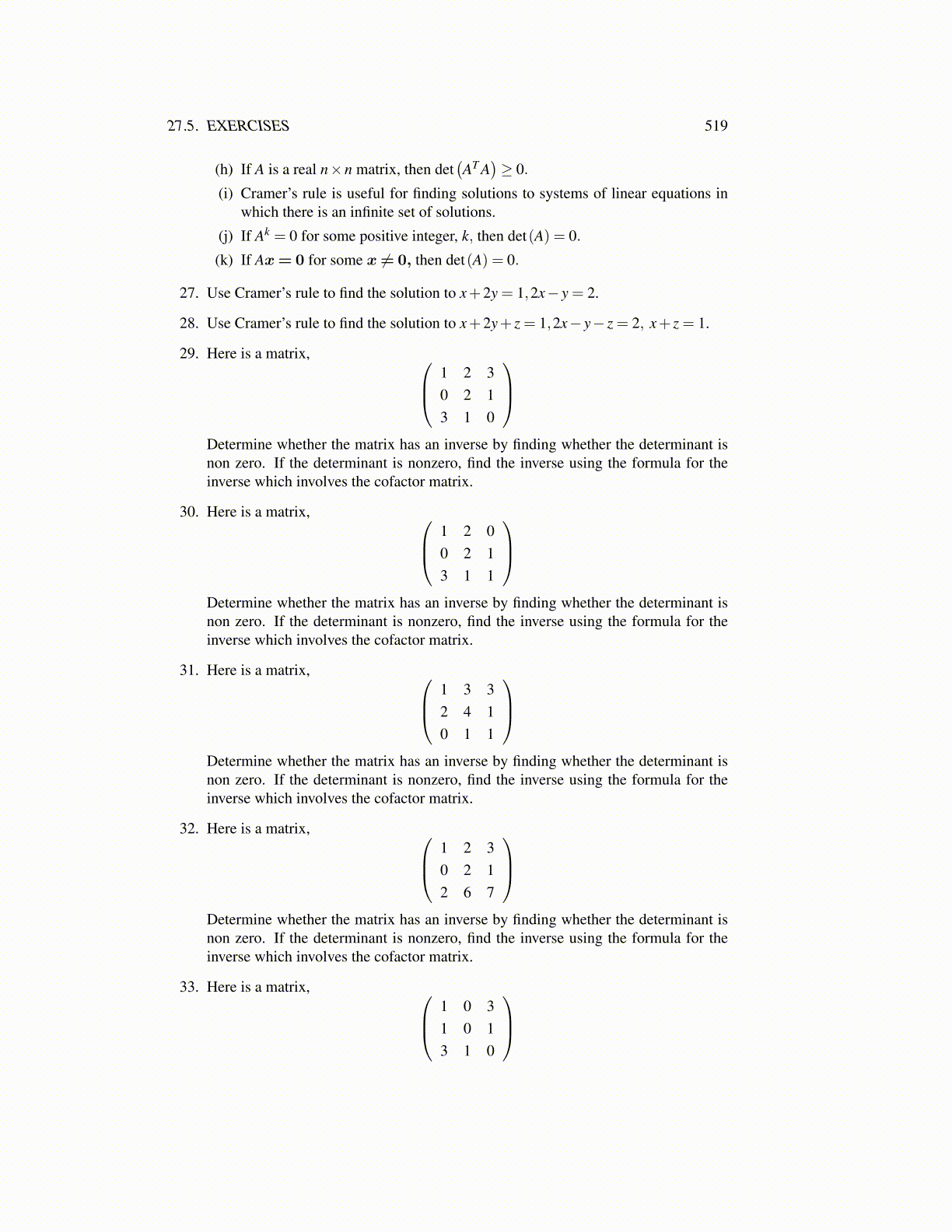
27.5. EXERCISES 519
(h) If A is a real n×n matrix, then det(AT A
)≥ 0.
(i) Cramer’s rule is useful for finding solutions to systems of linear equations inwhich there is an infinite set of solutions.
(j) If Ak = 0 for some positive integer, k, then det(A) = 0.
(k) If Ax= 0 for some x ̸= 0, then det(A) = 0.
27. Use Cramer’s rule to find the solution to x+2y = 1,2x− y = 2.
28. Use Cramer’s rule to find the solution to x+2y+ z = 1,2x− y− z = 2, x+ z = 1.
29. Here is a matrix, 1 2 30 2 13 1 0
Determine whether the matrix has an inverse by finding whether the determinant isnon zero. If the determinant is nonzero, find the inverse using the formula for theinverse which involves the cofactor matrix.
30. Here is a matrix, 1 2 00 2 13 1 1
Determine whether the matrix has an inverse by finding whether the determinant isnon zero. If the determinant is nonzero, find the inverse using the formula for theinverse which involves the cofactor matrix.
31. Here is a matrix, 1 3 32 4 10 1 1
Determine whether the matrix has an inverse by finding whether the determinant isnon zero. If the determinant is nonzero, find the inverse using the formula for theinverse which involves the cofactor matrix.
32. Here is a matrix, 1 2 30 2 12 6 7
Determine whether the matrix has an inverse by finding whether the determinant isnon zero. If the determinant is nonzero, find the inverse using the formula for theinverse which involves the cofactor matrix.
33. Here is a matrix, 1 0 31 0 13 1 0